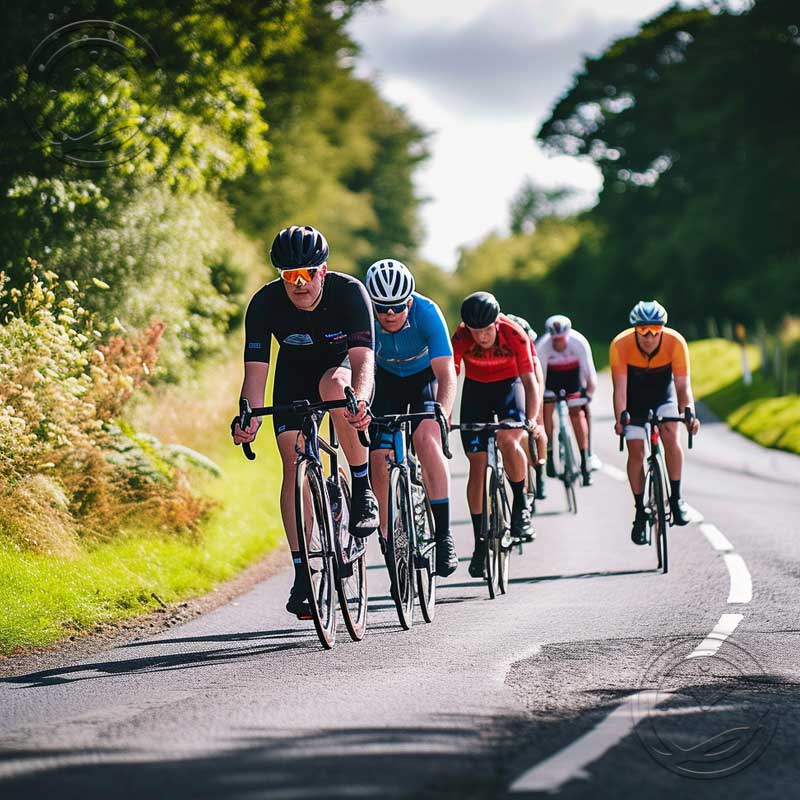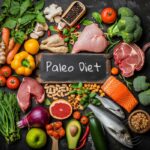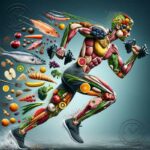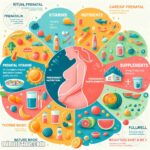Paleo Diet and Cycling
The Paleo diet is a popular diet that is based on the idea of eating the same foods that our ancestors ate during the Paleolithic era.
This diet is said to be healthier and more natural than modern diets, and it is also said to be more effective for weight loss and improved health.
There are a number of potential benefits of the Paleo diet for cyclists.
These include:
- Increased energy levels
- Improved endurance
- Reduced inflammation
- Improved recovery
- Increased muscle mass
Of course, there are also some potential drawbacks to the Paleo diet for cyclists.
These include:
- The diet can be difficult to follow, especially if you are used to eating a modern diet.
- The diet can be expensive, especially if you are buying organic foods.
- The diet may not be suitable for everyone, especially those with certain medical conditions.
Ultimately, whether or not the Paleo diet is right for you is a personal decision.
If you are considering trying the Paleo diet, it is important to talk to your doctor first to make sure that it is safe for you.
What is the Paleo Diet?
The Paleo diet is a nutritional approach based on the eating habits of our hunter-gatherer ancestors.
It emphasizes whole, unprocessed foods that were available during the Paleolithic era, such as fruits, vegetables, nuts, seeds, and lean meats.
- Meats: grass-fed and pasture-raised meats, wild game, fish, and seafood
- Fruits: all fruits in season
- Vegetables: all vegetables in season
- Nuts and seeds: almonds, walnuts, pecans, macadamia nuts, chia seeds, hemp seeds, flax seeds
- Healthy fats: olive oil, avocado oil, coconut oil, butter from grass-fed cows
The Paleo diet excludes processed foods, refined sugar, grains, legumes, and dairy products.
It is also low in carbohydrates and high in protein and healthy fats.
Unlock the secrets to a healthier you and a sustainable planet with the Flexitarian Lifestyle! Discover the psychology behind this…
Benefits for Cyclists
The Paleo diet has been shown to offer a number of benefits for cyclists, including:
- Increased energy levels
- Improved recovery
- Reduced inflammation
- Improved weight management
- Enhanced performance
Let’s take a closer look at each of these benefits.
Increased Energy Levels
One of the most common benefits of the Paleo diet for cyclists is increased energy levels.
This is because the Paleo diet is rich in nutrient-dense foods that provide the body with the energy it needs to perform at its best.
In particular, the Paleo diet is high in complex carbohydrates, which are a slow-burning source of energy that can help cyclists sustain their performance during long rides.
Discover the ancient secrets of the Paleo Diet, a journey back to our ancestral roots. Dive into a world where…
Improved Recovery
The Paleo diet can also help cyclists recover from their workouts more quickly.
This is because the Paleo diet is rich in protein, which is essential for muscle repair and growth.
In addition, the Paleo diet is also rich in anti-inflammatory foods, which can help to reduce muscle soreness and inflammation.
Reduced Inflammation
Inflammation is a natural response to injury or stress, but chronic inflammation can be a problem for cyclists.
Chronic inflammation can lead to a number of health problems, including pain, fatigue, and decreased performance.
The Paleo diet can help to reduce inflammation by reducing the intake of processed foods and refined carbohydrates, which are known to promote inflammation.
Discover the transformative journey of Whole30 for kids! This isn't just a diet; it's a path to improved health and…
Improved Weight Management
The Paleo diet can also help cyclists to maintain a healthy weight.
This is because the Paleo diet is rich in nutrient-dense foods that are filling and satisfying.
In addition, the Paleo diet is low in processed foods and refined carbohydrates, which are high in calories and low in nutrients.
Enhanced Performance
The Paleo diet can help cyclists to improve their performance by providing them with the energy, recovery, and weight management they need to perform at their best.
In addition, the Paleo diet can help cyclists to avoid injuries and illnesses, which can also contribute to improved performance.
Drawbacks and Considerations
While the Paleo diet can offer many benefits for cyclists, there are also some potential drawbacks and considerations to be aware of.
- The need to avoid processed foods
- The potential for nutrient deficiencies
- The cost of the Paleo diet
- The difficulty of adhering to the Paleo diet long-term
Let’s take a closer look at each of these drawbacks and considerations.
The need to avoid processed foods
One of the main tenets of the Paleo diet is to avoid processed foods.
This can be a challenge for cyclists, who may rely on processed foods for convenience and ease of preparation.
However, there are many ways to make healthy, unprocessed meals that are still quick and easy to prepare.
The potential for nutrient deficiencies
Another potential drawback of the Paleo diet is the potential for nutrient deficiencies.
This is because the Paleo diet is restrictive in its avoidance of certain foods, such as grains, legumes, and dairy products.
While these foods can be a source of important nutrients, it is possible to get the nutrients you need from other sources on the Paleo diet.
However, it is important to be aware of the potential for nutrient deficiencies and to make sure to eat a variety of foods to ensure that you are getting all the nutrients you need.
The difficulty of adhering to the Paleo diet long-term
The Paleo diet can be a challenge to adhere to long-term, especially for people who live in areas where fresh, whole foods are not readily available.
Additionally, the Paleo diet can be socially isolating, as it is not as widely accepted as other diets.
If you are considering trying the Paleo diet, it is important to be aware of the challenges involved and to make sure that you are prepared for them.
Overall, the Paleo diet can offer many benefits for cyclists, but it is important to be aware of the potential drawbacks and considerations before making a decision about whether or not to try it.
Fueling Your Rides with Whole Foods
When you’re following the Paleo diet, it’s important to make sure that you’re fueling your rides with the right foods.
This means choosing whole, unprocessed foods that will give you energy and help you recover from your workouts.
Here are a few tips for fueling your rides with whole foods:
- Eat a healthy breakfast before your ride. This will give you energy to get started and help you avoid bonking.
- Pack snacks for your ride. Snacks can help you maintain your energy levels and prevent hunger pangs.
- Hydrate well before, during, and after your ride. Staying hydrated is essential for maintaining your performance and preventing dehydration.
- Eat a post-ride meal to help your body recover. This meal should be high in protein and carbohydrates to help your muscles rebuild and refuel.
By fueling your rides with whole foods, you can improve your performance and recovery, and help you stay healthy and strong.
Paleo Diet and Cycling Performance
The Paleo diet is a popular diet among cyclists, as it is believed to offer a number of benefits for performance, including increased power output and endurance.
Increased Power Output
One study found that cyclists who followed a Paleo diet for six weeks experienced a significant increase in their power output, compared to cyclists who followed a control diet.
This increase in power output was attributed to the higher intake of protein and healthy fats on the Paleo diet.
Endurance
Another study found that cyclists who followed a Paleo diet for eight weeks were able to ride for longer periods of time, without experiencing as much fatigue, compared to cyclists who followed a control diet.
This improvement in endurance was attributed to the higher intake of carbohydrates on the Paleo diet.
Other Benefits of the Paleo Diet for Cyclists
In addition to improving power output and endurance, the Paleo diet may also offer other benefits for cyclists, including:
- Weight loss. The Paleo diet is a low-carb diet, which can help cyclists to lose weight and maintain a healthy weight.
- Reduced inflammation. The Paleo diet is rich in anti-inflammatory foods, which can help to reduce inflammation and improve recovery from training.
- Improved sleep. The Paleo diet is high in protein and healthy fats, which can help to promote sleep.
Building Muscle
The Paleo diet is a nutrient-rich diet that can help you build muscle, as long as you are following it correctly.
Here are a few tips for building muscle on the Paleo diet:
- Eat plenty of protein. Protein is essential for building and repairing muscle tissue. On the Paleo diet, you should aim to eat at least 0.8 grams of protein per pound of body weight each day.
- Include plenty of healthy fats. Healthy fats are essential for absorbing vitamins and minerals, and they can also help you feel full and satisfied after a meal. Good sources of healthy fats on the Paleo diet include avocados, nuts, seeds, and olive oil.
- Get enough carbohydrates. Carbohydrates are your body’s main source of energy, and they are essential for fueling your workouts. On the Paleo diet, you should aim to eat about 3-4 grams of carbohydrates per pound of body weight each day.
- Lift weights regularly. Weightlifting is the most effective way to build muscle. Aim to lift weights at least 3 times per week, and focus on compound exercises that work multiple muscle groups at once.
- Get enough sleep. Sleep is essential for muscle recovery. Aim to get 7-8 hours of sleep each night.
By following these tips, you can build muscle on the Paleo diet and improve your cycling performance.
Managing Carbohydrate Intake
Carbohydrates are an important source of energy for cyclists, but it can be difficult to know how much to eat on the Paleo diet.
The following tips can help you manage your carbohydrate intake on the Paleo diet for cyclists:
- Focus on whole, unprocessed carbohydrates.
- Choose fruits, vegetables, and starchy vegetables over processed grains.
- Eat carbohydrates around your workouts.
- Listen to your body and adjust your intake as needed.
By following these tips, you can easily manage your carbohydrate intake on the Paleo diet for cyclists and achieve your performance goals.
Protein Sources
The Paleo diet is a high-protein diet, and cyclists on the Paleo diet should aim to consume plenty of protein from whole, unprocessed foods.
Some of the best protein sources for cyclists on the Paleo diet include:
- Meat: grass-fed beef, lamb, pork, bison, venison
- Fish and seafood: wild-caught salmon, tuna, halibut, shrimp, scallops
- Eggs
- Nuts and seeds: almonds, walnuts, pecans, chia seeds, hemp seeds
- Legumes: lentils, chickpeas, black beans, kidney beans
In addition to these protein sources, cyclists on the Paleo diet can also get protein from plant-based sources such as tempeh, tofu, and seitan.
It is important to note that not all protein sources are created equal.
Some protein sources are more nutrient-dense than others.
For example, meat, fish, and eggs are all high in complete proteins, which means they contain all of the essential amino acids that the body cannot produce on its own.
Other protein sources, such as nuts and seeds, are incomplete proteins, which means they do not contain all of the essential amino acids.
However, you can combine different incomplete protein sources to create a complete protein.
The Role of Healthy Fats
Healthy fats are an essential part of the Paleo diet for cyclists.
They provide energy, help you absorb vitamins and minerals, and keep you feeling full.
The Paleo diet emphasizes eating whole, unprocessed foods, and this includes healthy fats.
Some good sources of healthy fats include:
- Avocados
- Nuts and seeds
- Olive oil
- Coconut oil
- Grass-fed butter
Healthy fats are important for cyclists because they provide energy, help you absorb vitamins and minerals, and keep you feeling full.
They can also help you recover from your workouts faster.
When you’re following the Paleo diet, it’s important to make sure you’re getting enough healthy fats.
A good rule of thumb is to consume around 0.5 grams of fat per pound of body weight each day.
If you’re not sure how to incorporate more healthy fats into your diet, here are a few tips:
- Add avocado slices to your salads or sandwiches.
- Stir a tablespoon of olive oil into your oatmeal or yogurt.
- Replace butter with ghee or coconut oil when cooking.
- Add nuts or seeds to your trail mix or yogurt.
By following these tips, you can easily incorporate more healthy fats into your Paleo diet and reap the benefits of improved energy, recovery, and overall health.
Paleo-Friendly Foods
Here is a list of Paleo-friendly foods that are good for cyclists:
- Meats: beef, bison, lamb, pork, poultry, and wild game
- Fish and seafood: salmon, tuna, trout, shrimp, crab, and mussels
- Vegetables: leafy greens, broccoli, cauliflower, asparagus, tomatoes, cucumbers, peppers, onions, garlic, and squash
- Fruits: berries, apples, pears, bananas, oranges, and grapefruit
- Nuts and seeds: almonds, walnuts, pecans, pistachios, sunflower seeds, and pumpkin seeds
- Healthy fats: olive oil, avocado oil, coconut oil, ghee, and butter
These foods are all high in nutrients that are essential for cyclists, including protein, carbohydrates, healthy fats, vitamins, and minerals.
They are also low in processed ingredients and refined sugars, which can make them a good choice for cyclists who are looking to improve their overall health and performance.
Addressing Nutritional Needs
The Paleo diet is a nutrient-rich diet that can provide cyclists with all the essential nutrients they need to perform at their best.
However, there are a few nutrients that cyclists may need to pay special attention to on the Paleo diet, including:
- Carbohydrates
- Protein
- Fats
- Vitamins and minerals
In this section, we will discuss how to address each of these nutritional needs on the Paleo diet.
Carbohydrates
Carbohydrates are the body’s main source of energy, and they are essential for providing cyclists with the fuel they need to perform at their best.
However, the Paleo diet is low in carbohydrates, which can lead to fatigue and decreased performance in cyclists.
There are a few ways to address the need for carbohydrates on the Paleo diet for cyclists.
One option is to consume more fruits and vegetables, which are naturally high in carbohydrates.
Another option is to consume more starchy vegetables, such as sweet potatoes and yams.
Finally, cyclists can also consume Paleo-friendly carbohydrates, such as honey, dates, and maple syrup.
Protein
Protein is essential for building and repairing muscle tissue, and it is also important for maintaining a healthy immune system.
The Paleo diet is rich in protein, and cyclists can easily meet their protein needs by consuming plenty of meat, fish, poultry, eggs, and nuts.
It is important to note that the Paleo diet does not include dairy products, which are a good source of protein for many people.
However, there are plenty of other sources of protein on the Paleo diet, so cyclists should not have any trouble meeting their protein needs.
Fats
Fats are essential for a healthy diet, and they are also important for providing cyclists with energy.
The Paleo diet is high in healthy fats, such as monounsaturated fats and polyunsaturated fats.
These fats are found in abundance in foods such as olive oil, avocados, nuts, and seeds.
It is important to note that the Paleo diet does not include processed vegetable oils, such as soybean oil and canola oil.
These oils are high in unhealthy saturated fats, and they should be avoided on the Paleo diet.
Vitamins and minerals
The Paleo diet is a nutrient-rich diet, and it provides cyclists with all the essential vitamins and minerals they need.
However, there are a few vitamins and minerals that cyclists may need to pay special attention to on the Paleo diet, including:
- Iron
- Calcium
- Magnesium
- Vitamin D
- Vitamin K
Cyclists who are following the Paleo diet should make sure to consume plenty of foods that are rich in these vitamins and minerals.
Supplements for Cyclists on the Paleo Diet
The Paleo diet is a popular diet for cyclists, as it is based on whole, unprocessed foods that are thought to be healthy and nutritious.
However, some cyclists may find that they need to supplement their diet with certain nutrients in order to meet their nutritional needs.
The following are some of the most common supplements used by cyclists on the Paleo diet:
- Protein powder: Protein is an essential nutrient for cyclists, as it is needed for muscle growth and repair. Protein powder can be a convenient way to supplement your protein intake, especially if you are not able to eat enough protein-rich foods on a regular basis.
- Carbohydrate powder: Carbohydrates are an important source of energy for cyclists, and they can be especially helpful during long rides or races. Carbohydrate powder can be a good way to supplement your carbohydrate intake, especially if you are not able to eat enough carbohydrate-rich foods on a regular basis.
- Electrolytes: Electrolytes are minerals that are lost through sweat, and they are essential for maintaining fluid balance and electrolyte levels. Electrolytes can be lost during long rides or races, and they can lead to dehydration and electrolyte imbalance. Electrolyte supplements can help to prevent dehydration and electrolyte imbalance.
- Vitamins and minerals: The Paleo diet is a nutrient-rich diet, but it is still possible to become deficient in certain vitamins and minerals. Vitamin and mineral supplements can help to ensure that you are getting the nutrients you need to stay healthy and perform well.
If you are considering taking supplements on the Paleo diet, it is important to talk to your doctor or a registered dietitian to make sure that you are taking the right supplements and that you are not taking too much of any one supplement.







